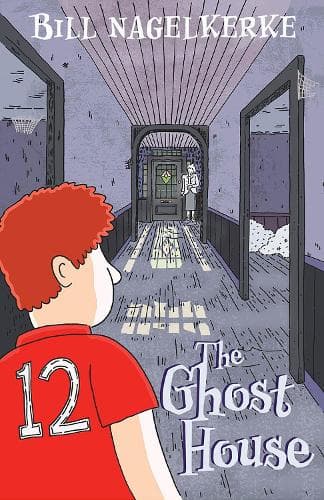Review: The Ghost House
Reviewed by Alex Eagles
Bill Nagelkerke has a knack for using creative perspectives to write about complicated topics with the paranormal as a recurring theme in his work.
The renowned children's author says as a child, he loved reading fantasy, sci-fi and ghost stories that "skewed the world a little.” Several generations later, the twists in Nagelkerke's own supernatural books have proven popular with today's young readers; his first novel for children, Old Bones, described as "a classy ghost story" by The Dominion Post, was a Storylines Notable Book in 2007.
The Ghosts on the Hill, a tale based on an actual historical New Zealand event, was both a Storylines Notable Book and winner of the Kids' Pick Award in 2021. And, gauging by the response from my Year 7-9 reviewers, his latest children's novel, The Ghost House, looks set to follow along the same pathway.
Nagelkerke says ghost stories are “a wonderful and meaningful metaphor for writing/righting the past in a contemporary context,” and indeed, he uses this concept to full advantage in The Ghost House. It is in his home town of Christchurch and takes place a decade after the devastating earthquakes shook the city.
Several of my young reviewers admitted to knowing very little about the South Island earthquakes. As a result, many questions were asked, internet sites searched and information shared. As well as the impact of natural disasters, The Ghost House touches lightly on other deep topics. A number of these resulted in some great conversation starters amongst my reading group; a recommendation to teachers or parents of 8-13 year olds looking for a book to encourage discussion. The black and white sketches by illustrator Theo Macdonald, scattered throughout the book, also add to the experience and the comments.
The chapter book follows David, a boy recuperating from a severe illness. Interestingly, an extremely sporty 12 year old in the review group commented that he could sympathise with the frustration the cricket-mad main character expressed in the book. However, he had not been kept from his beloved rugby, basketball and cricket by illness but by Covid restrictions.
During his recovery, David discovers the Ōtautahi Red Zone. In the wake of the earthquakes, this once busy urban suburb was deemed uninhabitable and returned to nature and the community. David meets many interesting characters in this strange new wilderness, including a derelict old house with a mysterious occupant.
Although some of my young reviewers confessed to being a bit confused at first, they all agreed the story keeps the reader guessing the role each character will play as it progresses. "I particularly liked the bits of humour," commented one articulate 11 year old when overall impressions were being contemplated. "Finding and exploring the weird house was good," added another. "I could see it in my head."
Nagelkerke's writing has a way of engaging the reader to the extent that you feel like you are there with David as he explores the Red (Twilight) Zone and navigates the changes in his own life. The author is no stranger to writing about serious issues. His novel Sitting on the Fence was about the 1981 protests against apartheid by 150,000 New Zealanders during the South African Rugby Tour. A finalist in the Junior Fiction section of the 2008 New Zealand Post Book Awards for Children and Young Adults, the book was recently re-released as Stop the Tour.
It is not surprising that in 2013, Nagelkerke was awarded the Storylines Margaret Mahy Medal for a distinguished contribution to New Zealand children's literature and literacy. During the last four decades, he has written more than two dozen children's books, as well as numerous short stories, poems and plays for the New Zealand School Journal and, an Australian equivalent, the New South Wales School Magazine.
Reviewed by Alex Eagles
